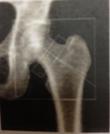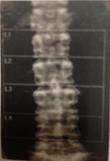| Bone Density Test Results |
When is a Bone Density Test recommended?
Your doctor might order a bone density test if you are:
· 65 or older
· Postmenopausal and have certain medical factors or a fracture from a fall regardless of age
· 50 or older, postmenopausal, and have additional risk factors such as smoking, drinking excessive
alcohol, weigh < 127 lbs, have a parent with hip fracture, have rheumatoid arthritis)
· Postmenopausal and recently stopped using hormone replacement
|
|
How are the results of the Bone Density Test reported?
|
A bone density test measures the mineral content (density) of your bones. Your measurement is compared with a healthy standard. The norm for comparison is the bone density of the average 30 year old woman because this is when we reach our peak bone mass.
|
|
We are forming new bone in our teens and twenties.
Reach our peak bone mass in our thirties.
Do not make any more new bone in our forties.
Start to lose bone in our fifties as we go through menopause.
|
| The results are reported as a standard deviation called a “T-score”. A T-score with a minus sign in front of it means you have lost bone.
A T-score greater than -1.0 is considered normal.
A T-score between -1.0 and -2.5 indicates osteopenia (low bone mass).
A T-score of -2.5 or below means you have osteoporosis.
|
 |
| hip joint |
|
|
The two most reliable areas for testing are the hip and the spine. You will receive separate results for each area.
|
 |
| lumbar spine |
|
|
How do the results of the bone density test relate to the risk of fracture?
|
Women who have osteoporosis are more likely than those with healthier bones to experience a fracture. However, women with osteopenia plus other medical or lifestyle factors may also be at risk. To assess your risk of a future fracture, your T-score plus factors such as smoking, alcohol use, body mass index (BMI), and any previous fractures, need to be considered.
You can determine your own risk of fracture by using the FRAX calculator (http://www.shef.ac.uk/FRAX/tool.jsp). This calculation helps to predict how likely you are to experience an osteoporosis-related fracture over the next 10 years.
|
|
When is treatment recommended?
|
|
Regardless of your results, all women should make sure they get the recommended amount of calcium and vitamin D. Calcium-rich foods are the best for sources of calcium but consider a supplement if your diet is not adequate.
Make sure you are getting adequate amounts of weight-bearing exercise. Reduce lifestyle behaviors that weaken bone particularly smoking and excessive drinking.
Your doctor will discuss with you if drug therapy is needed.
|
|